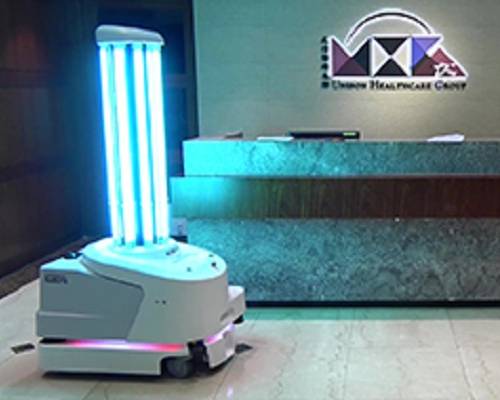With the advent of the AI era, the medical industry has begun to use AI data analysis to develop surgical robotics and create a new dimension of precision medicine. Miscalculations and errors that may have occurred in the past due to human fatigue can now be handled by robotics; early and minor illnesses that are not visible to humans can be forewarned by AI so that doctors can prescribe the right medicines earlier. AI will not replace humans, but will instead collaborate with them to create the greatest possibilities for precision medicine. Now AI surgical robots have been officially introduced into the operating room to help surgeons create a new era of less risky, safer and more efficient surgeries with precision, flexibility and big data.
ROSA One, introuduced by Shuang Ho Hospital, performed the first robot-assisted deep brain stimulation (DBS) surgery in Taiwan. It helped to improve the condition of patients with Parkinson’s disease through the precise positioning of the robotic arm and the implantation of electrodes.
How can AI surgical robots help doctors create the most comprehensive surgical outcomes?
The assistance of surgical robots can be a great advantage for surgeries that require precise operation, said Dr. Wei-Lun Lo, attending neurosurgeon at Shuang Ho Hospital. Compared with ROSA One, although the conventional method that uses headframes also has the electrodes implanted into the target position, the metal material used may be out of calibration due to repeated use and material fatigue, which may require recalibration and even complete replacement. In addition, the surgeons who perform the surgeries may make mistakes in the manual adjustment of the scale, which means that the surgeries may still carry certain risks of error.
By using the AI surgical robotics with 3D scanning data, surgeries can be completed accurately and with low error rate, allowing surgeons to focus more on patients’ conditions during the procedure and making the surgery go more smoothly. Compared to conventional surgical operations, which are time-consuming and may cause more pressure on the surgeons performing the operation, which may lead to errors, the robotic-assisted operation will shorten the operation time, thus reducing the risk of surgeries.
According to Lo, robotic assistance can actually bring benefits to the entire medical team and the patients. Not only can the success rate of the surgery be greatly improved, but it can also relieve the pressure generated during the surgery, thus reducing the chance of failure. It can also reduce the risk of general anesthesia for the patient and save the family from the psychological pain of waiting for a long time.
With these advantages, not only are medical teams happy to see the introduction of surgical robotic systems in hospitals, but patients and their families are also generally receptive to robotic-assisted surgery.
There are more possibilities for surgical robotic systems, including computer vision, automatic navigation, and AI analysis.
The first lumbar spine surgery in Asia and the first robot-operated deep brain stimulation surgery in Taiwan were performed at Shuang Ho Hospital with ROSA One. It is expected that the successful story of Shuang Ho Hospital will encourage more hospitals in Taiwan to install surgical robotic systems so that more surgical procedures can be performed in a precise manner.
As more surgeries may be performed by robots in the future, Lo believes that this will lead to a better quality of care. Even if the outcomes of the surgeries done by robots were not too different from those of successful conventional surgeries, there would still be a difference in terms of precision, as well as labor and time consumption. Take the deep brain stimulation surgery mentioned earlier for example, the error committed in a conventional surgery could be between 2 mm and 10 mm, but with ROSA One, the error committed can be controlled to be within 0.5 mm, making the surgery more efficient.
In addition to ROSA One, the da Vinci Surgical System created by Stanford University is also highly recognized by hospitals worldwide. The da Vinci Surgical System is the most advanced mechanical minimally invasive surgical system available. It is mainly composed of three parts: a surgical robotic arm, a 3D endoscope, and a console. With the 3D endoscope, the machine provides an ultra-high resolution 3D field of view during the procedure, which allows people to determine the distance and position for accurate operation. It is worth noting that the da Vinci robotic arm can mimic the delicate movements of human beings, such as rotation and clamping, and therefore has the ability to perform delicate surgery in tight spaces. In the past, the da Vinci arm has been able to cut and suture grape skins without leaving scars from the narrow openings of bottles.
Assisted by robotic systems, the medical team’s control of the entire surgical procedure can be relatively improved. The automated operation of the surgical robot results in a reduction in the lengthy surgical time, thereby significantly reducing the burden on the patient during the procedure, such as reducing the physical effects of general anesthesia. In the future, with the integration of more new technologies, surgical robots will be able to link up with computer vision, automatic navigation, and artificial intelligence applications through data analysis to further reduce human error and complete more precise surgical operations.
In fact, the work performed by the surgical robot is based on the medical technology developed in the past few decades, but with higher precision and stability. For example, during deep brain stimulation surgeries, when surgeons perform electrode implantation, the superfine mandrin for the electrode implantation may be bent due to nervousness or lack of attention, resulting in deviation of the actual electrode implantation position. Such a situation will almost never occur as the outcome of surgical robots.
In addition, Lo also said that the operation and learning of ROSA Oneintroduced by Shuang Ho Hospital, are quite humane. In order for the surgical robot to operate better, Shuang Ho Hospital has assigned an independent medical team to be responsible for the operation, so that the surgeon in charge of the surgery can focus on performing the surgery.
Learn more about ROSA One: A glimpse into the innovative capabilities and applications of surgical robots
Source: TechNews



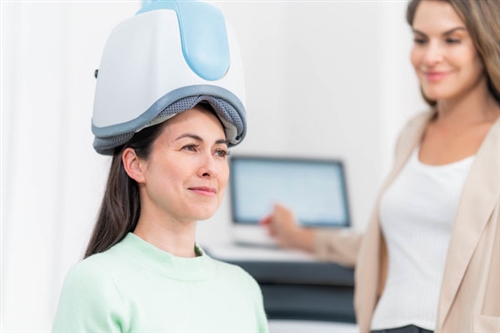
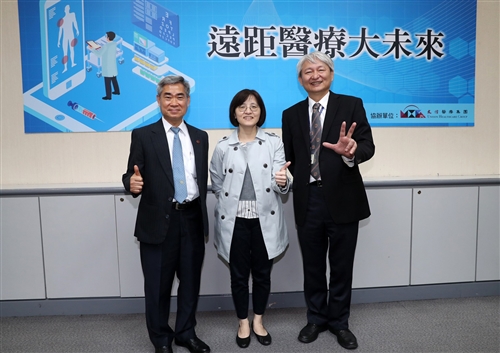

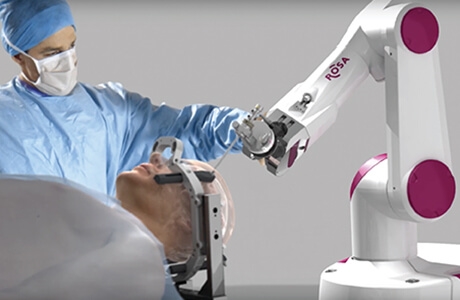


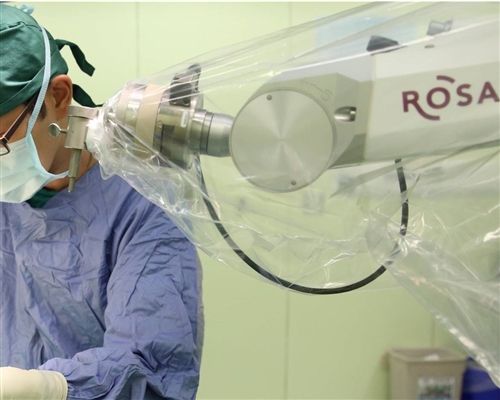

![[UHG Medical News] Utilizing Professional Data Technology to Decrease the Potential Risk of Nosocomial Infection and Enhancing Protections for Taiwan’s Healthcare System](/uploads/ef5af251540148f685bed1a80eb9e8b9.jpg)
